The year 2015 has been one of many great articles, interviews, and discussions here at Designing Sound and we want to thank all of our readers for their attention, suggestions, contributions, and overwhelming support. There have been so many great films, shows, games, and events this year that we thought we would share some of our favorites for you to go back and check out in case you missed them!
Varun Nair
While many of the sounds in The Force Awakens were a standout (oh Kylo’s lightsaber!), a lot the listening I have done this year has not-so-coincidentally been related to my work with spatial audio. Rather than specific sounds, I remember moments where the interplay of sound with my other senses did “something” for me. Standouts for 2015:
- The studio stems of Björk’s Stonemilker. The raw power of her voice is absolutely amazing!
- The foley in Crimson Peak
- Interacting with virtual audio with my hands, using Oculus Touch and the HTC/Valve Vive. Being able to grab a virtual object in space and manipulate audio in real-time can is so empowering! I spent a long time playing around with virtual wind chimes.
- A very high quality binaurally recorded reverb, listened to binaurally in the same room in which it was recorded
- The Skywalker Sound showreel at the Ranch
Topher Pirkl
This year, I’ve been lucky enough to work on a handful of games with very retro aesthetics. This has taught me one thing: It’s surprisingly hard to do lo-fi or retro sound effects well. In the same way that we somehow spend much more time trying to make music tracks sound like they were recorded on mag tape using classic hardware, I ended up sinking a lot of time trying to make downsampled SFX sound decent, to recapture a feeling from a gaming era gone by.
So it’s no surprise that some of my favorite sounds of the year come from a game that successfully captured an old-school game vibe, giving several nods to classic approaches, while doing it all with a distinctly modern vibe. While there’s probably a few games that fit that description, I’m referring to Moppin’s Downwell, released this past October for Windows and mobile.
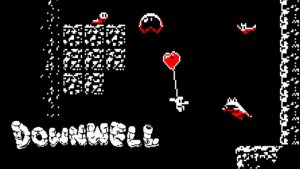
This game thrives on a creative and difficult central mechanic: you shoot and jump with the same button, all while moving steadily downward into the depths of a well. Sound designer Joonas Turner brought his unique style to the audio in this game, giving us a design that’s aggressive and stylish, while still very effectively giving the player the essential feedback they need to thrive in a game that often demands split-second timing from you. The game feels tight and satisfying to play, and the crunchy, meaty sound effects are no small contributor to that.
Plus, in true Joonas Turner style, I think most of the sound effects have at least one layer of Joonas making noise with his mouth mixed in. Go play it, it’s worth every penny. Just be sure to do it with headphones on if you’re playing it on mobile! (And may the Force be with you, it’s tough with touch controls).
Richard Gould
As opposed to just offering up my favorite sounds of the year, I’m going to do some highlights and lowlights (I’m British after all) as I look back on the things I heard this past year that caught my ear for better or worse.
FILM
“Mad Max” certainly got a lot of attention, deservedly so, and is even mentioned elsewhere in this post by my fellow DS editors. Given all the positive praise, I hesitate to say this for fear of the backlash, but while I felt the sound design was broadly exceptional, I felt the film was way too loud. I found it to be loud to the point where during extended action sequences I would be in pain, the sound distorting in my ear drum as I’ve only experienced before at an Iron Maiden show. It got so bad at points that I had to plug my ears for 30s or so just to give them a rest.
I fully admit that my impression is likely partly down to the specific screening I saw, perhaps being played at too high a level, but I did get a sense that everything between sound and score was being overly compressed, fighting for attention. Part of the problem I feel is that the action is so persistent without letting up for such extended durations that it looses any sense of dynamics and just becomes fatiguing. Often action sequences in films cut between moments of high and low visual intensity (or to a parallel event in time at another location) to provide contrast. We use the same effect in sound to illustrate what’s loud from what isn’t. Unfortunately, this just doesn’t happen in “Mad Max”. It’s feels like it’s turned up to 11′ all the time! As such, you can’t simply turn it down because highly compressed audio just sounds quiet when turned down, whereas dynamic content carries though to lower volume levels still retaining a sense of impact and drama.
For the sake of argument, lets compare what’s essentially a dialogue scene in “Mad Max” against a heavy action scene in “Avengers: Age of Ultron” (also released in 2015).
Between engines roaring, screaming score and shouted lines of dialouge, my ears fast become fatigued, and this isn’t even an action scene! It works well as a short clip, but when you sit for a couple of hours listening to this kind of unrelenting sound, I feel it diminishes the experience.
Apologies for the quality, the previous video I linked to was removed by the copyright owners.
[youtube]https://www.youtube.com/watch?v=6FZKTC5C8vI[/youtube]
This scene on the other hand has all the same elements, but there’s a great range in dynamics and great use of space between ‘sound moments’. Obviously it helps that the picture cuts away from the action to shots of pedestrians in peril or an arial shot, but even when the action is unrelenting, lots of room is carved out between the hits to make each one feel like a singular moment as opposed to a unrelenting stream.
There’s also a much better sense of the dialogue, music and sound working together. I love how they allow the space of Iron Man’s mask to be practically silent except for Iron Man’s voice. Watch from 2:50 and notice while Iron Man is being torn apart outside, inside it’s still a relatively quiet environment giving us a moment to catch our breath.
There’s also examples (such as at 1:00) where the music purposefully makes space for sound. This is a doubly effective technique as it makes the moments where music returns even more powerful and saves the music from just becoming sonic wallpaper.
With “Mad Max” it feels like there was just too much content from each department to work with in the first place. As if each element, sound, dialogue and music, was created in isolation and designed to carry the whole soundtrack on its own.
All this isn’t to say that I didn’t like “Mad Max” as I did. It was exhilarating, visually striking and had some fantastic novel elements in its action sequences. And of course it is clearly designed to be something of an assault on the senses, and it certainly left me with a buzz as I walked out of the theater. I just wish that my ears weren’t left buzzing too.

At the other end of the spectrum was “Last Days in the Desert”. This was something of a low budget sleeper which seemed to pass by without many people noticing. As I have something of a man-crush on Ewan McGregor though, it didn’t slip by me. Aside from it being a simple, beautifully shot, edited and performed piece of drama, it also had one of the most outstanding soundtracks I’ve heard and I’m talking about both music and sound here. The film follows Jesus though the desert in an imagined chapter of his life with Ewan McGregor playing the role of both Jesus and the Devil. The film only has three other characters and it progress unhurriedly though a simple story allowing for lots of space. The score by Saunder Jurriaans and Danny Bensi was (as I remember it) poignant, simple and it played creatively with tuning. Unfortunately, it doesn’t appear to be online to reference yet.
Zach Seivers and J.M. Davey were at the helm of the sound for the film and did a fantastic job. Deserts are notoriously quiet, yet they were tasked with creating an evocative atmosphere and I think they managed to tread the line of creative realism beautifully. A fellowship from Dolby facilitated an Atmos mix which was beautifully handled as well, adding some depth and extending your sense of the scene slightly beyond the boundary of the screen without distracting you. I was lucky enough to see a screening with J.M. Davey in which he shared some of the story behind the making of the film, including a tale of him falling down a cliffside while trying to record the sound of someone doing just that. Post Perspective had a short piece on the post production process you can read here: Capturing, creating sounds for ‘Last Days in the Desert’
“Star Wars – The Force Awakens” will no doubt be represented well by my fellow colleagues in this post, and rightly so. Back in college I gave about four hours of presentations on the sounds of “Star Wars” so I was waiting in anticipation to see how the sounds of the universe had been developed or replaced. Overall I was left very happy as it’s a great sounding film and I was especially impressed by how the editors and designers were able to tastefully update some iconic sounds without loosing the DNA behind them. Some felt like they were appropriately pulled from the original trilogy verbatim (so to speak), such as many of the sounds in the Millennium Falcon, while others were refreshed to great effect.
The lightsaber stood out in my memory with this 2015 take on the weapon sounding (and therefore feeling) more powerful, weighty and unstable. The prequels made lightsaber combat much more elegant and fast paced (great in its own right) and the weapons sounded quick and light (if you’ll excuse the pun). In “The Force Awakens” the combat style seems to fall somewhere between the original trilogy and the prequels with a slower, more deliberate, passionate and less choreographed feel. It felt like the lightsabers had moved from being agile fencing sabers towards more a heavy broadsword (an idea supported aesthetically by Kylo’s cross guard).
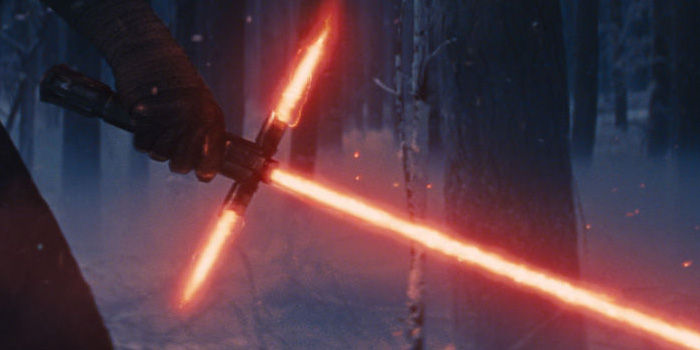
This sonic development is especially noticeable with Kylo Ren’s lightsaber which was obviously designed visually to mirror Kylo’s temperament. The sound does a great job of supporting this with a much more vicious and spluttery sound than we’ve heard before from a lightsaber. The idea itself isn’t new as it’s something that stems back to Ben Burtt’s work in the original trilogy when he distinguished Darth Vader’s lightsaber in a similar way, it’s just brilliantly extended and executed here.
Also, props for the crew for exercising restraint and only including one Wilhelm Scream (far as I could hear).
GAMES
Last year I got a Wii U. Soon after that I picked up “Mario Kart 8” which as you may already know, sounds fantastic. Now personally, I liked the more synthetic musical soundtrack of “Mario Kart Double Dash” on the Game Cube, and it took me a while to warm up to the idea of so much live instrumentation now being a part of the aesthetic. I should say that as a composer I certainly value and love live instrumentation, but I don’t subscribe to it simply being better ‘because’. Synthetic sounding ‘fake’ instruments can be an appropriate aesthetic depending on the game.
Once I had learned to love the refreshed score, I started to appreciate how well the game is mixed. All the elements sit well despite so much going on. This became evident when I would alternate playing “Mario Kart 8” and “Sonic Racing Transformed”. Along with some odd audio bugs that kept cropping up, I generally found “Sonic Racing Transformed” to suffer from too much going on at once resulting in too much compression and very evident ducking taking place to try and make room for important sounds. To come back to the music, I think that might be where the main issue is. The music in “Mario Kart 8” is wonderfully dynamic and well arranged. There’s a lot more compression and less variation in the music for “Sonic Racing Transformed” which I don’t think translates as well into the experience. Take a listen to the comparisons below and see if you agree.
I should note that these issues are exacerbated when you play multiplayer as I occasionally do with my wife. It’s a shame as overall, I find “Sonic Racing Transformed” to be a much more rewarding and challenging racer. Given the choice however, I put up with Mario’s static tracks with irritating rubber band AI just because it is a feast for the ears!
In 2015, I did some major catch up work on my PS3. I got though “MGS4”, “Far Cry 3”, “Bioshock” (my third attempt to get into the series) and “Bioshock Infinite”. Most recently however I completed “Dishonored” and I thought it sounded pretty great.
One of the highlights was the sound used for the “Blink” special ability which allows the player to rapidly transport themselves to another location in their view. You’ll hear this around the 1:10 mark in the video below. It’s a skill the player will use constantly so I imagine a lot of work went into designing such a key sound. Despite there not being much apparent variation in the sound, it’s immediately satisfying yet subtle enough so that it doesn’t feel overbearing and as such doesn’t get repetitive.
There’s also a great sense of physicality in the game supported by the sounds such as all the Foley-esq elements such as the weapon handling, footsteps and picking up bodies. There are also some great sounds relating specifically to the steam-punk technology within the world that blends old sounds with futuristic elements.
One sound that I didn’t like so much was the effect for the “Dark Vision” skill which you hear at 0:40 in the video below. It’s another key skill which allows you to see though walls. It’s so helpful that I probably spent half of the game with the skill active, and as a result I heard the sound hundreds of times. I personally found the whispering voice at its initiation very repetitive and then the throbbing ambient sound that follows a little heavy given its frequent / continued use.
The last game I’ll mention is the one I’m currently playing though. “Child of Light” is a visual and sonic treat. The beautiful 2D hand-painted aesthetic is supported by delightfully delicate music and sound design that I would describe as musical, crisp, clean and clear. I haven’t found a single sound in several hours of play that has bothered me, but instead have found several that always put a smile on my face. There’s some great footstep work, especially when in water (which is a shame as once your character gains the ability to fly you’ll spend most of the game off of the ground). Some of my favorite sounds relate to the main character Aurora, a young girl who’s oversized crown and sword musically clatter on the ground with great rhythm as she reacts to being hit (0:44) or as she raises the sword victoriously before succumbing to its weight (3:30). There’s also some great magic / spell work as well as fantastic creature design, especially in the example below. These statues have such weight, power and a fantastic rocky texture with all their movements.
Here’s a link to an article discussing some of the sound work for “Child of Light” and here’s a short featurette on the music and sound for the game.
Jack Menhorn
Richard, Sam, and the others that mention this movie do so more eloquently than I could. To be honest I have only seen it once so far and during that time I felt 1/3 my age, so I wasn’t listening very critically. But I’d say my favorite sound from the film was:
All of it.
This kicked off the wave of nostalgia that Force Awakens rode into the end of 2015. The sound of Battlefront is spot-on and incredibly fascinating. DICE Audio Director Ben Minto’s interview at Soundworks delved a little bit into how they were able to faithfully recreate and update the existing library of sounds for this title. While the game proper suffers from a lack of depth, I think any sound designer will find more than the price of admission’s worth of inspiration and awe with this game.
-Mad Max: Fury Road
I absolutely love this film visually, aurally, and philosophically. Sonically: I really love the sound of Max’s hand gun. The whole film is so exaggerated and hyper real- it is interesting that his pistol is just as powerful and more detailed/interesting than Furiosa’s rifle in this scene:
-Varun mentioned the Skywalker Sound showreel: which to me was an enlightening, educational, and semi-religious experience.
Berrak Nil Boya
It has been an amazing year for video games, from long awaited sequels to unique new discoveries, we ended up having a significant amount of games to add to our seemingly never ending backlogs. However, among all of these fresh releases and time constraints, I couldn’t keep myself from making the time to play Destiny! Which brings me to my favorite sound of 2015…
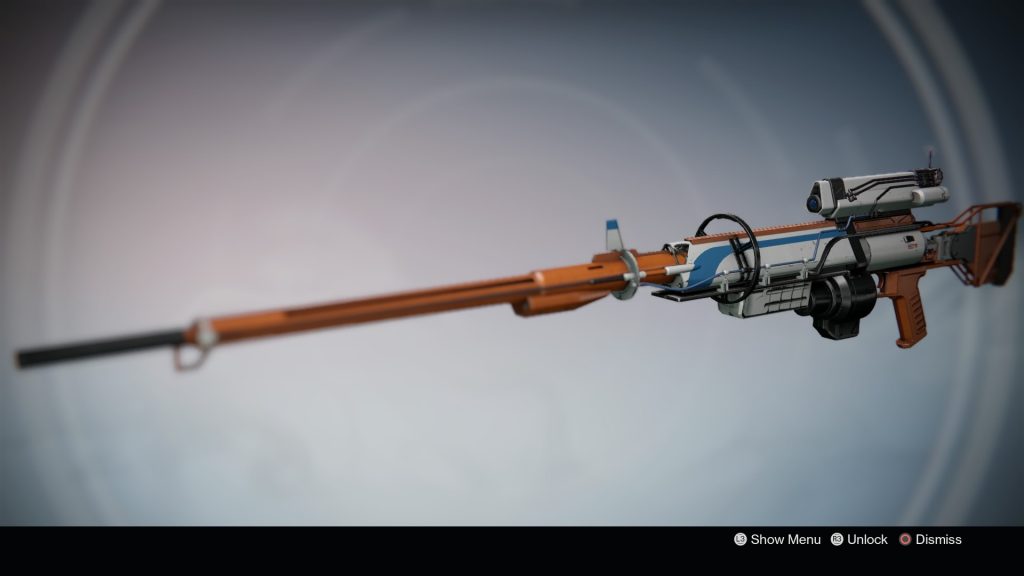
Hereafter (Exotic Sniper Rifle)
As a fan of sniper rifles in general, I was already excited to get this weapon in the first place, so imagine my joy when I heard it sounded like this..
[youtube]https://www.youtube.com/watch?v=UYWo8WN05ZM[/youtube]
As it was evident from Jay Weinland’s talk at GDC 2015*, Bungie audio team went above and beyond to make sure all weapons in Destiny not only sound great but also have a certain amount of uniqueness to them. In my view, Hereafter is the perfect example of this approach. As an Arc Damage inducing weapon, it consists the timbre of an electrical current, both in the shot and the reload sections, while also emphasizing its additional power as an exotic weapon with the use of the low frequency range in the tail. All in all Hereafter ended up being one of my favorite weapons in Destiny, not only due to its powerful features but also thanks to its very distinct sound.
*You can watch “Sound Design The Bungie Way : The Weapons of Destiny” talk on GDC Vault if you have a membership, or you can read Adam Axbey’s notes from the talk here.
Sam Ejnes
This past year flew by in what felt like an instant, and as always seems to be the case, there just wasn’t enough time to see and hear everything. However, a few things come to mind when thinking back on this year in sound:
After talking about it for years and even writing an article about it last winter, 2015 saw me finally jumping head-first into the bottomless rabbit hole of modular synthesizers. After countless hours spent researching and a few surprising product announcements (like Moog’s entrance into Eurorack), I found a local shop, grabbed some patch cables and went to town. While I’m still waiting on my Mother32 to arrive, I’ve spent a lot of time with my little Werkstatt analog kit synth, patching away and recording the wild results. Coming from a mostly software-based background, it has been amazing to have such tactile interactions with the sound and working with something as organic and fleeting (and un-recallable) as a modular has a been a really freeing creative experience.
On the film side, “Mad Max: Fury Road” was a ruthless, in-your-face and gritty experience to behold. I was able to witness on both an enormous IMAX screen and a slightly smaller Dolby Atmos theater, and while the IMAX visuals were amazing (if not overwhelming), the Atmos track was what really caught my ear. While it can be very easy for a movie with so much bombastic action to become nothing more than a wash of noise, I was impressed by how clear and separated everything was in the Atmos mix, a credit to both the sound editorial and mixing crews. Mad Max was a film made for the big screen, so if you ever have an opportunity to see it in a theater, take it.
There’s no way I’m not putting Star Wars on this list; I loved it, and hearing so many of the classic signature sounds (Wilhelm screams aside) brought back to life was probably my favorite part. What I liked most about the sound of the film was how well the old sounds, like the howl of TIE fighter engines and Stormtrooper blasters, melded with the new. I had forgotten just how much fun seeing a Star Wars film on the big screen could be, and The Force Awakens was a perfect example. I have yet to see the film in Atmos, but even in a 7.1 theater, it sounded huge, fun, and has me looking forward to the next film.
I also discovered more new music in 2015 than years past, primarily thanks to the amazing Song Exploder podcast, hosted by Hrishikesh Hirway. In particular, the episode where The Album Leaf’s Jimmy LaValle dissect the song “The Outer Banks” from the 2004 album “In a Safe Place.” Not having heard the track before, it was amazing to learn about the writing process and how the song coming together and hear it broken down into its various elements. Luckily for me, 2015 saw a re-pressing of the album on vinyl, which I was sure to pick that up as fast as I could.
Here’s to an amazing 2016!
Adriane Kuzminski
Has a topic ever nagged you in way that you knew if you just committed it to memory, you’d save yourself time and racking your brain every time it came up? Often these unretained bits of information are birthdays and street names, and in the audio world they might be definitions, recording techniques, or plugins you use every day but don’t fully understand. For me, this topic was bird calls.
Over the past year, I came to appreciate the temporal and geological information these calls signify and the tones they evoke in a scene, but I couldn’t for the life of me link these sounds to the names and bodies of their owners. Every time “what’s the name of that bird with the crazy computer-like sounds…?” popped in my brain, I was saved by state bird lists and Youtube, which, after a half hour of searching, would offer me the wood thrush. Two months later I’d frustratedly repeat the process. So, I decided to stop wasting my time and dedicate a little part of my brain to memorizing common bird sounds. With the help of a few libraries, the Macaulay Library and Naturebits.org, I learned about the many calls of the robin and cardinal and found I am surrounded by ovenbirds and sparrows in Connecticut. But while camping over Independence Day weekend, a bird that was hidden most of my life flew in and swept me off my feet: the common loon. It’s not that I never heard it before; growing up, it was the voice of the Minnesota lottery which could be heard during most commercial breaks. However, as I laid in my tent those warm summer nights, the call soared across the Wisconsin lake to tell me another world existed past the water. I would hold my breath to hear its long reverberation fade into the trees. What a fantastic sound!

Luckily, I don’t seem to be alone in the emotions of solitude and mystery I feel upon hearing this impressive animal. From the snowy cliffs of Hogwarts in Harry Potter and the Prisoner of Azkaban, and the wintery Austrian Alps of White’s secluded home in Spectre, to the rolling desert in Conan the Barbarian (1982), or The Forest World of Goldwood in Jet Force Gemini, the loon can be heard piercing through these bleak, mysterious foreign lands. With a single majestic call, it locks these strange magical places in time or space as they lay hidden from civilization through a veil of charms; or perhaps myth, planetary motion or an oppressive landscape. This sound indicates these are frontiers of the supernatural with rules that can only be explained through fantasy. The physical and narrative wonder of this call is why when asked what my favorite sound of the year is, I had to choose the sound of this beautiful animal. Like the locations it embodies and inspires, the loon sits tucked away just waiting to impress you with its magnificence.
Luca Fusi
Too many sounds to name, many nameable sounds forgotten. But here’s some of the audio that enraptured me enough to hang on for a Best Of post in 2015:
Ori and the Blind Forest

Ori is the folk tale of a magic forest whose tranquility’s been corrupted, shattered by a bunch of malign stuff. I don’t remember the plot exactly. It’s a moving, hand-painted journey experienced through stretches of Metroid-like exploration, Super Meat Boy trials and retrials. And it sounds really damn good.
Wabi Sabi Sound is an S-Tier sound design house that brings a really bespoke touch to everything they work on, but that’s nowhere more apparent than Ori. You’ll hear tales of the developer, Moon Studios: spread across multiple continents, collaborating entirely via telepresence for years to get this labor of love done. You can tell that passion must’ve had an effect on Wabi. There are so many wonderful sounds in this game, from the tiny, vulnerable, breath-like ‘hop’ of Ori as he flops around; UI work that feels bright and glasslike and magical, yet solid-bodied and tactile. But some of my favorite sounds in Ori are its ambiences. I’d idle in zones with my surround system on and just let the forest swirl around me for minutes at a time. I’ve got a few 5.1 captures of all that, but didn’t think this the place to upload them sans permissions. Perhaps a more in-depth article somewhere down the line?
Shoutout to the team there for my favorite game sound design of the year. Here’s a video of Andrew Lackey in his element:
And some gameplay capture:
Undertale

I played Undertale through in a weekend out of town only because a) I knew its specifications were low enough to run on a loaner computer and b) everyone’d been talking about it, but had suspiciously light on their reasons why. So I was curious.
Undertale fought an uphill battle to win me over: its spiritual predecessor, Earthbound, isn’t a game I’ve ever played or really wanted to; it has all the surface-level trappings of some twee, retro-stylized, self-important Indie Game with a Heart that make it incredibly easy to dismiss amidst the trends. (*Though, Actual Sunlight was one of my favorite games of 2014, so I should’ve known better than to write it off for this reason.) But it gradually stole away my cynicism as I continued to play. It’s a special title with lots to offer, and the fact that I am still–months later–thinking daily about this 7-hour RPG that is something I could’ve never predicted.
The game’s soundtrack is brilliant, full of leitmotifs that reappear throughout the game to subtly connect characters and moods. Its choice of instrumentation, ranging from 8-bit squarewaves, to iconic soundfonts (‘that’ SNES Capcom guitar; ‘that’ Final Fantasy VI timpani, clarinet and orchestral voice; and even a track that I’m pretty sure stole trumpets from Final Fantasy: Mystic Quest) pull you right back into an era when those games made you feel things. And then Undertale makes you feel things, too.
Soundfont Examples:
Leimotif Examples:
Undertale’s BXFR-style sound design isn’t anything super noteworthy, but does what it needs to, and comes to resonate with you just the same. For as literal to the aesthetic as it is, it’s used extremely well. Many of the game’s darker moments let the soundtrack fade to zero, and fill the space eerily with the chip-synth ‘voice’ of a character’s textbox as they deliver some bad news, or say a last goodbye; the universal sound of a monster’s soul evaporating sounds one way in the middle of battle, but that same sounds something meaningful and poetic when it play visually unaccompanied after a monster’s limped offscreen in silence to die. This game, man.
Also, this sound still gives me chills. Kefka, anyone?
Else Heart.Break()

I’ve listened to Else Heart.Break()’s soundtrack for far longer than I expect I’ll ever play the game. I took a break from it, came back, couldn’t pick up the thread. But that’s okay–it was enough just to discover the music. It’s a Various Artists kinda mix that spans moody, lo-fi downtempo beats and bright, chiptuney anthems. It covers a lot of ground, and somehow feels like the West’s answer to a Persona soundtrack. That kind of groove. Really great stuff for walking, thinking.
The UI work in this game’s wonderful, too. The keyboard click of confirming movement feels weighty and great despite how often you hear it, and character speech and menus all have a pleasant, rounded quality to them. Would’ve been easy to take the metaphor of this game and go overboard with digital sounds, but Oscar gets everything right in the pocket.
My favorite track has to be this one. Something about it goes straight to some younger, purely emotional part of me and gets my hair standing on end with every listen. Dunno why.
But, that’s the beauty of sound, right?
Kung Fury
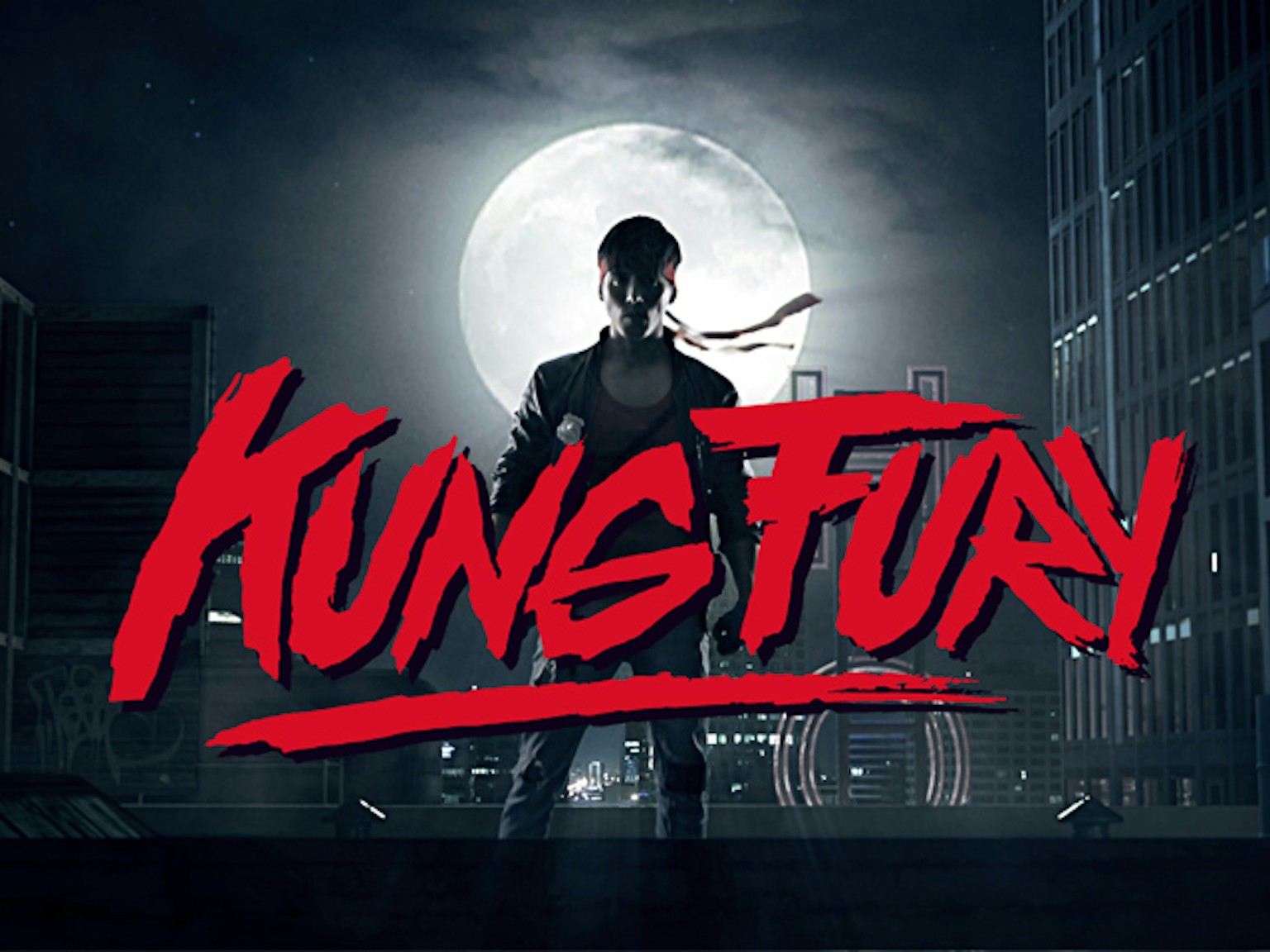
For a guy who drives a car that looks like this, nothing’s cooler than that stark, grimy, neon-streaked vision of 1980-something held up in Kung Fury. The one where it’s always nighttime, the cops are helpless and ninjitsu is the only way to fight crime. I love this shit.
Kung Fury’s sound design goes as hyperbolic on that era as the rest of it. It’s got VHS tracking warble, it’s got just the greatest sounding old computers–but my favorite sonic moment of the film has to be its dream sequence throwback to the era of 80’s action cartoons. Sound Designer Patrik Öberg hits the sound of this scene with such authenticity that you’ll wonder if it weren’t made thirty-five years ago. And in a time when we’re all reaching backwards to rediscover these forgotten lo-fi sound palettes (hey, Topher!), you’ll likely wonder how he did it.
- There’s a great interview with Patrik here–http://www.asoundeffect.
com/kung-fury-sound/–that also touches on the Foley work of the film. - Also, if you haven’t watched it yet, go and do it. Seriously. It’s 30mins long, incredible, and free.
Star Wars: The Force Awakens
What about this movie didn’t sound incredible?
So much has already been said about the ways this film brought the most iconic sounds of–well, any film–sparking and crackling into the modern age. So I’ll just list my favorite: that revolving cortosis baton-like weapon used by that one Stormtrooper (whom the Internet has christened “TR-8R”).

Man, did that thing land.
So much body, power, and strength on every swing, every crushing blow. I felt my ribs caving as he’d bring it down. And in a world full of beam swords that can cut through anything and orbital spacestations capable of planetary destruction, that’s saying something. Plus, I’m a sucker for when they decide to let actual layman weaponry (blasters, thermal detonators and the like) feel effective in the face of that unanswerably powerful Jedi stuff.
Peter Albrechtsen
Living in Denmark there’s lots of movies which haven’t come out yet – like the much praised The Revenant, Anomalisa, Carol and The Hateful Eight – and I’ve missed movies like Lost River, Arabian Nights and Victoria which are supposed to have interesting soundtracks. But here’s my 10 Favorite Sonic Moments of 2015 on several platforms and in random order:
Son of Saul
I’ve seen a lot of WW2 movies but never experienced the destruction, despair and claustrophobia of a death camp quite like in the unforgettable Son of Saul. The sound design in this Hungarian feature film is absolutely essential to this intense experience. The camera is focused closely on a Jewish prisoner in Auschwitz, and the sound creates the world beyond the lens – a virtuoso cacophony of screams, frenzied whispers, gunshots and constantly evolving background noise. I’ve never heard anything like it. A modern sonic masterpiece.
Björk: “Stonemilker” – VR video
Thanks to my Designing Sound-colleague Varun Nair I got the chance to properly experience Björk’s 360-Degree Virtual Reality “Stonemilker” video and I was blown away. Wearing a VR headset and excellent headphones I was totally encapsulated in Björk’s wonderful musical world with voices and tones and moving around my head. I’m a very enthusiastic fan of Dolby Atmos and this almost felt like a step further – a supersonic surround experience.
Mad Max: Fury Road
What a crazy movie! Denmark has one of the biggest Atmos theaters in the world and experiencing this unstoppable high-octane action colossus was overwhelming in every way. My ears had a great time because of the impressive sonic creativity and dynamics. I really enjoyed the abstract subjective sounds when we’re inside Max’s head and the interplay between the sound design and Tom Holkenborg’s awesome score was extraordinary.
The Revenant – trailer
As mentioned above I still haven’t seen The Revenant but as I’m writing this I’m listening to the movie’s excellent soundtrack – with liner notes by sound designer Martin Hernandez, actually! – and I’ve been enjoying the trailers a lot. There’s so much creative sound design happening in trailers these days and this was one of my favorites of 2015 (together with Mad Max). The video from Soundworks Collection about the sound is also a tantalizing appetizer.
Macbeth
I really love when movies really utilize the film language and works with images and sounds in an almost abstract and expressionist way. Macbeth did that but at the same time using Shakespeare’s classic text and the result was a cinematic poem. A very bloody and brutal movie and definitely for all tastes but I was totally mesmerized. The sound and the score – by the director’s brother, actually – was also integrated in very musical ways. Hypnotic.
Sicario
This was my favorite film music of the year: Jóhann Jóhannsson’s score was simply astounding – “the throbbing heart of a beast charging at you”, as the composer said himself. The symphonic orchestra was used as an instrument in itself while the distorted, pulsing percussion created both trance and tension. It’s one of those rare movies with the guts to skip words and dialogue and let the images, music and sound effects do the talking.
Trailer:
Love & Mercy
If you make a movie about a musical genius you better do it in a musical way – and that’s what Love & Mercy is: a refined sonic trip through the unique mind of Brian Wilson. We understand how brilliant he is but also how paranoid and fragile he can be and all because of the expressionistic sound design and Atticus Ross’ score which reshapes classic Beach Boys songs into abstract sound collages. It’s this year’s Whiplash – a music film that really opens the ears.
Soundworks interview: http://soundworkscollection.com/news/the-sound-of-love-and-mercy
Star Wars: The Force Awakens/Bridge of Spies
Gary Rydstrom is a sound legend and this year he did two remarkable movies. Everybody has already seen The Force Awakens so it’s no secret that it features a terrific, dynamic Atmos mix with very imaginative use of the surrounds. On the other hand, not enough has been said about Rydstrom’s other movie, Spielberg’s Cold War drama Bridge of Spies. The first sensational 20 minutes has no score and very little dialogue – truly brilliant sonic filmmaking.
Inside Out
For many years, Ren Klyce has been one of my favorite sound designers – his collaboration with David Fincher is outstanding. Recently, Klyce has moved into animation movies as well and Inside Out was one of the most moving movies for me in 2015. It’s filled to the brim with elegant sonic textures that makes the abstract world inside the mind of the main character come alive in a very vivid way. Contains some of the most exquisite sounds I’ve heard all year.
Soundworks video: http://soundworkscollection.com/videos/the-sound-of-inside-out
https://www.youtube.com/watch?v=BY4bL_bO8sA
This is a few years old but I stumbled upon it this year and have enjoyed it again and again. It’s hilarious and extremely creative. I love the grey area between sound and music and in this remix of Steve Reich’s Clapping Music the sound effects – hopefully it’s not production sound – turn into music. Angie Dickinson and Lee Marvin hit it off, so to say. As a lot of sounds on this list are dark and gloomy, I thought I’d end with a laugh. Sound is fun, you know.
2016, I’m looking forward to listening to you!
**
Thanks to the Designing Sound staff for sharing some of their favorite sounds of 2015! Please share yours with us in the comments below, on Facebook, or on Twitter!
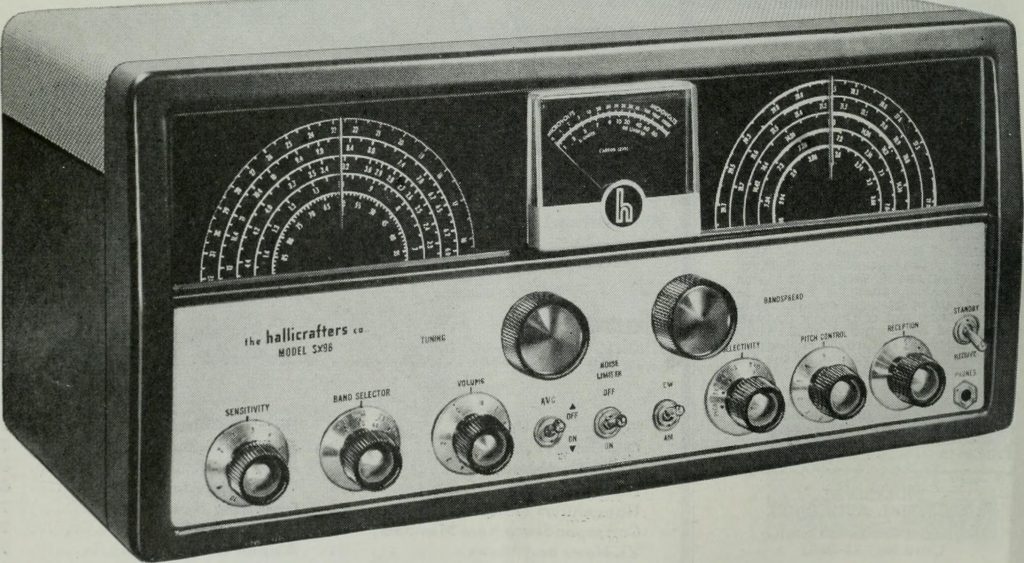

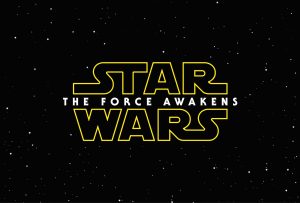
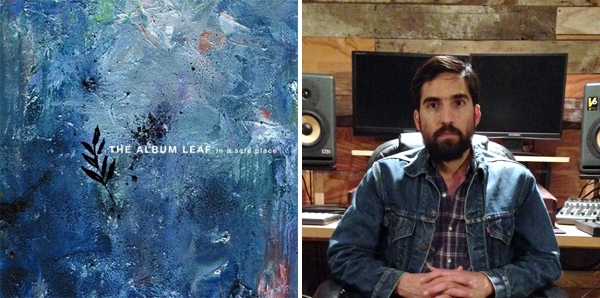
Minions and its mini-movies have a very nice cartoon-y style (and @splitsurround appreciates the love I tweet of it), Inside Out is more realistic but with a nice touch by Ren Klyce. Jurassic World’s Jimmy Falon and Dinosaur battle scenes as well as most of Age of Ultron have great sound design; Star Wars: Rebels has a lot of great explosions, metallic and electrical sounds, lightsabers and that shrill clang (plus pig sounds) in “Idiot’s Array), also used in The Peanut Movie TV Spots, one of which has a nice ricochet. Strange Magic is realistic enough (aside from the trailers) but has unique elements E.J. Holowicki designed. I’ll see The Force Awakens (great sound in trailers by Will Files) at the AMC Prime closet to me w/THX & Dolby Atmos. Films I heard in 2015 that were pre-15 and worthy of mentioning include Avalon (2001), Escape from Planet Earth, Johnny Bravo: I, Fly/Johnny of the North, The Chicken from Outer Space, The Fifth Horseman, Daybreak Berlin (1999, released 2001), THX Eclipse, Springtime with Roo, Sponge out of Water (rumored to be Skywalker Sound: http://spongebob.wikia.com/wiki/Thread:161771), Wings on Netflix, Oblivion (illegally through HBO via zerocast.tv),Zambezia, Clone Wars “Mortis” series, The Tom & Jerry Show, Unbroken trailer #1’s WWII scenes which are indeed Skywalker Sound, Let’s Pollute, Confusion Through Sand, The Island (2005), The Dark Knight opening, The Smurfs (2011), Veggietales in the House: Trading Places, Toy Story that Time Forgot w/Toy Story 2 Buzz Lightyear game sounds, The Lorax w/Thom using the Disney “errrrPOP” sound, Young Indy including Perils of Cupid using the HB “poke” sound, China: The Wild East excerpts (sounds like Ben Burtt to me), Hubert’s Brain, Yellowstone (1993), Latino (1985), 9/11 stuff in Manifest Destiny, Double Victory doc (2012, Lucasfilm), Nissan Leaf: Polar Bear, Lifesavers Gummi Conga II, The Secret of NIMH w/old-fashioned lightsaber-crackling sounds, and Battlefront Trailers from ’04-’15.